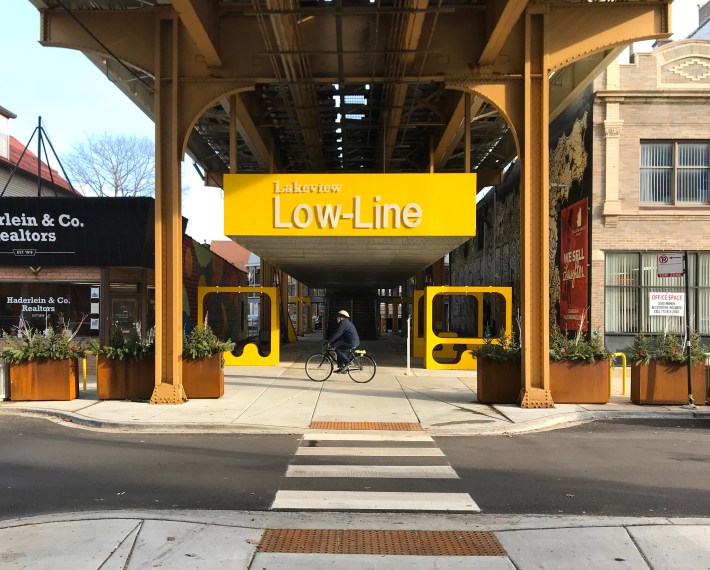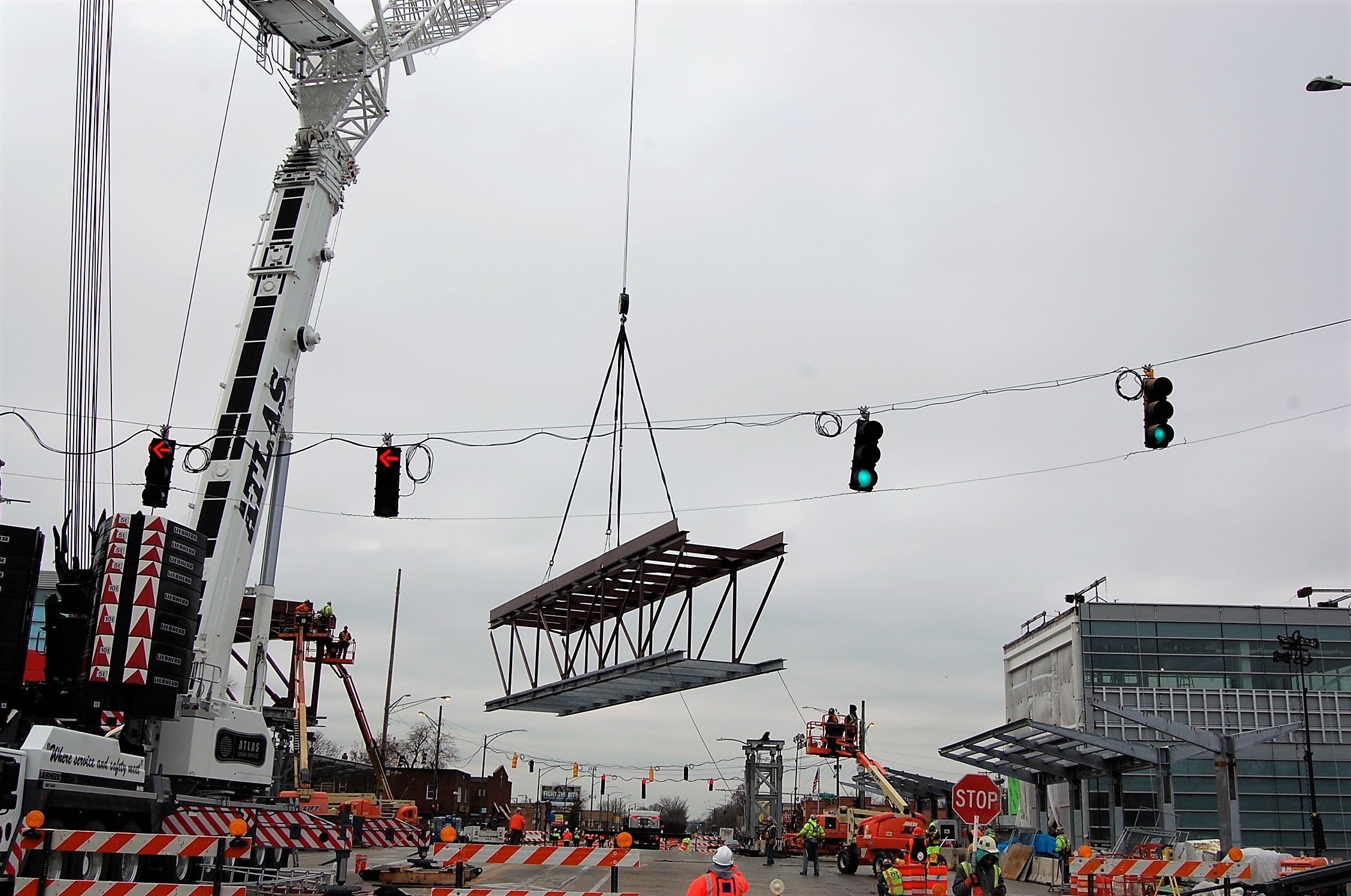[This article previously appeared in the Chicago Reader.]
With multiple Donald Trump-related felony convictions last month and a partial government shutdown in effect, things in Washington, D.C. are crazier than ever, but at least some sanity finally prevailed in 2018 in regards to federal transit policy.
Early on the Trump administration had announced its intention of eliminating federal funding for public transportation, and as of last summer the Federal Transit Administration was hoarding $1.4 billion that Congress had appropriated for new projects. This stonewalling jeopardized 17 initiatives around the country, including plans to double track the South Shore commuter line to create express service between Chicago and Michigan City, Indiana.
Thankfully it looks like Trump’s war on transit is wrapping up, since on November 28 the FTA announced it was releasing $281 million of that money to pay for five projects. More funding announcements are expected next month, when the Democrats gain control of the House.
With all the chaos in Washington, it’s good to live in a city where sensible transportation policy have become (more-or-less) a given in recent years. 2018 was no exception, with a number of positive developments for transit, walking, and biking.
That’s not to say that there weren’t some low points last year. Drivers had fatally struck six people on bikes on Chicago streets as of mid-December. In August cyclists were particularly shaken by the death of Angela Park, 39, a spin instructor and triathlon coach who was run over by truck driver in Greektown during the morning commute. And during one particularly bad week in September two bike riders were seriously injured in Chicago and two were killed in the suburbs.
Fortunately, the city made significant progress in creating safer bike routes last year. The Chicago Department of Transportation installed 30 miles of new and upgraded bikeways, including 7.2 miles of traffic-calmed “neighborhood greenway” side-street routes, 11 miles of buffered bike lanes and four miles of new or upgraded protected bike lanes. The latter included adding concrete protection to the popular Dearborn, Milwaukee, and Elston lanes.
Last month CDOT partially opened the $60 million Navy Pier Flyover, which has taken longer to construct than the Golden Gate Bridge, allowing cyclists on the Lakefront Trail to bypass the dangerous Grand and Illinois intersections.
Meanwhile, the Chicago Park District recently completed the Lakefront Trail separation project, bankrolled by a $12 million donation from Republican billionaire Ken Griffin. Residents have grumbled that the new bike-only path runs dangerously close to soccer fields and picnic areas in Uptown, and gobbles up precious green space. But separating bike and pedestrian traffic has made the most hectic segments of the trail considerably more chill.
2018 was also the year that dockless bike-share debuted on the far south side, with most of the trips taking place in or near Beverly. The pilot ended in November, but locals gave it a thumbs-up, so hopefully the “DoBi” cycles will return soon and be deployed in a larger service area, perhaps the entire city.
Meanwhile, Car2go point-to-point car-sharing launched here in July, albeit in a limited zone due to Not In My Back Yard resistance from some private car owners and aldermen. And dockless electric scooter companies jockeyed to set up show here, lobbying in Springfield and doing demos at street fests.
The Divvy system weathered an existential crisis last summer when thieves figured out a method for steal bikes from stations. City emails I obtained showed that the problem was due to a foolish decision to remove security hardware from the docks, but after our report came out Divvy sped up the reinstallation of the part, finishing in November, and the problem seems to be under control now. On the bright side, the system turned its highest-ever profit for the city last year, $3.7 million.
Transportation-related equity concerns continued to be a major issue in 2018. Last summer the Chicago Police Department admitted that officers have written exponentially more tickets for bike infractions in some communities of color compared to majority-white neighborhoods as a strategy to conduct searches for contraband.
And, in the wake of skyrocketing housing prices along the Bloomingdale Trail corridor, so-called “environmental gentrification” is a growing concern. Last month, in advance of the construction of the Paseo trail in Little Village and Pilsen, City Council passed an ordinance doubling the amount of on-site affordable units required in new developments in the area. But some housing advocates say the law doesn’t go far enough to prevent displacement of longtime residents.
Some good news for affordability was that, after hiking fares last year, the CTA, Metra, and Pace approved 2019 budgets with no fare increases.
There was progress on several transit stations in 2018, including the completion of the $203 million Wilson stop rehab, and major progress on the $280 million 95th Street Red Line station reconstruction, which is slated to wrap up by New Year’s. In November workers installed a massive 150-foot sky bridge spanning busy 95th Street to link the two terminals. Renovations of the Garfield Green and Jefferson Park stops are also moving along, and in April the CTA and CDOT broke ground on the new Damen Green Line station near the United Center.

On a smaller scale, I’m a fan of the colorful new canopy, freeform seating fixtures, planters and murals that were recently installed at the Paulina Brown Line station as part of the Lakeview Low-Line project. This “placemaking” initiative will eventually create a half-mile walkway under the tracks leading to the Southport stop.
But things aren’t looking completely rosy for local transit. Due to the growing popularity of Uber and Lyft, Chicago-area ridership continued to slump last year – the Regional Transit Authority projected a 2.6 percent drop by the end of 2018 compared to 2017. The 31st Street bus narrowly escaped cancelation due to low ridership, and the CTA is currently looking for a private sponsor to bankroll the route.
Meanwhile, CTA documents I obtained showed that the $41 million Loop Link express bus corridor has resulted in only modest gains. The Active Transportation Alliance also put out bus service report cards for all 50 wards, and found that most parts of the city got mediocre or failing grades for speed and reliability. Clearly if we’re going to stop the ridership bleeding, we need to implement robust timesaving featured on bus lines, like well-enforced bus-lanes and prepaid boarding.
There have been several developments in recent weeks that suggest 2018 is going to be a big year for Chicago transportation, especially as the mayoral race heats up and a more transit-friendly Democratic administration takes over in Springfield. In early December City Council moved to take over an abandoned rail line that runs across Goose Island to create a transit route from the future Lincoln Yards development to the Loop.
Also last month, the CTA board approved contracts for construction of the $2.1 billion Red and Purple Modernization project on the north side, and preliminary engineering for the $2.3 billion Red Line extension on the South Side. And, no longer seeking reelection, Mayor Rahm Emanuel recently called for taking the unpopular, but necessary, step of raising the state gas tax, which has been stuck at 19 cents since 1991, to fix Illinois’ crumbling infrastructure and properly fund transit.
So buckle your safety belts or, rather, strap on your bike helmets, folks. It looks like 2019 is going to be a wild ride.





